With so much of a business now stored and transmitted electronically, it’s vital to the reputation and day-to-day running of your business that you keep your information safe and away from prying eyes and malicious hands.
Governments, hospitals, businesses, charities and individuals… no entity is safe from breaches and ransomware attacks. In an age where the world is run online, we all need to improve our cybersecurity preparedness.
The good thing is that Cyber security needn’t be a daunting task for business owners. Here we’ve prepared a 20-point Checklist to implement today that could save time, money and your business’ reputation.
Whilst you can never guarantee protection from all types of cyber attack, this is a great start to significantly reduce the chances of your business becoming a victim of cyber crime.
Here are some practical steps you and your staff can take to improve your data security.
Employee Training:
Conduct regular cybersecurity training for employees.
Teach them about phishing, social engineering, and safe online practices.
Strong Password Policies:
Enforce strong password requirements (complexity, length).
Encourage the use of password managers.
Multi-Factor Authentication (MFA):
Implement MFA wherever possible, especially for critical systems and accounts.
Regular Software Updates:
Keep all software, including operating systems and applications, up to date.
Enable automatic updates when available.
Firewalls and Intrusion Detection/Prevention Systems:
Use firewalls to monitor and control incoming and outgoing network traffic.
Implement intrusion detection and prevention systems to identify and block threats.
Antivirus and Anti-Malware Software:
Install reputable antivirus and anti-malware solutions.
Keep them updated and conduct regular scans.
Data Backup and Recovery:
Regularly back up critical data to secure and offsite locations.
Test data restoration procedures periodically.
Access Control:
Limit access to sensitive data based on the principle of least privilege.
Implement user account management and revoke access when necessary.
Security Patch Management:
Develop a patch management process to apply security patches promptly.
Incident Response Plan:
Create an incident response plan detailing actions to take in case of a security breach.
Conduct drills to test the plan’s effectiveness.
Network Security:
Secure your Wi-Fi network with strong encryption and a unique SSID.
Disable unnecessary network services and ports.
Physical Security:
Protect servers and network equipment with physical security measures.
Limit physical access to sensitive areas.
Encryption:
Encrypt sensitive data in transit and at rest.
Use HTTPS for web traffic and employ encryption protocols like TLS.
Vendor Security Assessment:
Assess the cybersecurity practices of third-party vendors and service providers.
Monitoring and Logging:
Implement real-time monitoring of network traffic and system logs.
Set up alerts for suspicious activities.
Regular Security Audits:
Conduct security audits or hire a third-party to assess your security posture.
Cybersecurity Insurance:
Consider cybersecurity insurance to mitigate potential financial losses.
User Awareness:
Continuously educate employees about emerging threats and best practices.
Legal and Compliance:
Ensure compliance with relevant data protection regulations (e.g., GDPR, HIPAA).
Regularly Review and Update Security Policies:
Review and update your security policies and procedures regularly.
Remember that cybersecurity is an ongoing process.
Tailor this checklist to your business’s specific needs and stay vigilant in the ever-evolving landscape of cyber threats.




